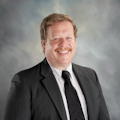Endress+Hauser celebrates 10 years of workforce development
Key highlights:
- Endress+Hauser's Nexus program shows how rotating engineers through multiple departments can improve job fit, retention and overall technical competency.
- The expansion into mid-level career training helps ensure experienced engineers can advance into higher responsibility roles, reducing skill bottlenecks.
- Partnerships with K–12 schools, universities and community programs expose students to automation, robotics and coding early.
Organizers or companies just starting or considering workforce development projects might want to know what a successful program looks like after 10 years, right? Well, one of the most comprehensive and wholehearted efforts is the Nexus program, formerly known as Rotational Engineering, which Endress+Hauser started in 2014 at its U.S. headquarters in Greenwood, Ind.
It began by seeking the most suitable, full-time roles for new hires, mainly recent college graduates, by rotating them through different Endress+Hauser departments for six to 12 months. This process lets them match their interests with the company’s needs. So far, close to 160 associates have gone through the program, and nearly 80% are still employed by Endress+Hauser, its customers or sales representatives.
Over the past decade, Endress+Hauser’s workforce development initiatives have expanded beyond entry-level onboarding to most of its local and regional outreach efforts, including collaboration with k-12 schools, colleges and universities, and their larger communities.
“We created a wide opening on the exposure, awareness and immersion side of our conceptual funnel, and this created an entry point for talent on the hiring side,“ says Nicole Otte, workforce development director at Endress+Hauser. “We’re seeing a reverse brain drain—so it’s more of a ‘brain gain.’ ”
Support existing staff, too
Beyond enhancing its outreach efforts, Otte reports the early-career Nexus program was also expanded with the launch of a mid-level career version in 2024. This is because there was a bottleneck in the talent pipeline for mid- and upper-level roles in the organization.
Get your subscription to Control's tri-weekly newsletter.
“Finding the right talent for positions that required higher level skills was a challenge,” explains Otte. “So, we began thinking about developing our existing employees, who were in the early to midpoints of their careers. This would enable them to develop new skills and capabilities by using the same rotational process, which would allow them to be exposed to the teams and projects they’d need to be successful in those future roles.”
Consequently, Endress+Hauser not only refilled its personnel pipeline, but it also started a new key performance indicator (KPI) called Classroom-to-Colleague to track workforce development progress. Otte reports it presently gets 11% of its employees from Classroom-to-Colleague, but it wants to increase that KPI to 20%. It also fills 55-60% of available positions from within Endress+Hauser, and it wants that percentage to be at least 60% consistently.
“One of the best ways to start a workforce development program is to connect with local schools, organizations and the community, and start small by selecting one activity or program, like an internship program,” adds Otte. “You may also have to push past barriers. Companies that prioritize building critical connections today may be better positioned to attract top talent in the future—while those that don’t could risk falling behind.”
This is part four of Control's August 2025 workforce cover story. Read the other installments here.
About the Author

Leaders relevant to this article:


